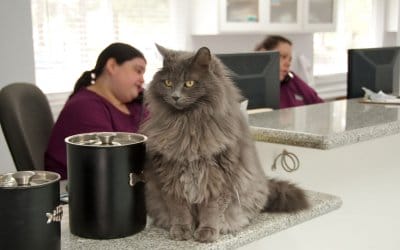 Which of these scenarios resonates more with you?
Which of these scenarios resonates more with you?
- A hospital where the practice manager or owner spends most of the day putting out fires, frequently handling client concerns, and knee-jerk reacting to everything.
- A hospital where the practice manager or owner spends most of the day developing their staff, continually working on the hospital’s culture, and driving profitability.
I’m going to guess that’s a resounding option B.
However, often we as managers feel more like babysitters — dealing with two staff members in a disagreement, explaining to a client why they do indeed need to pay for that exam (even if it “only took 5 minutes”) or trying to figure out how to get the staff on board with a new initiative.
But it doesn’t always have to be that way.
“By grooming and developing future leaders in our practice, we can regain our sanity and our time, plus gain some unique ROI (Return on Investment.)”
Why you should focus on leadership development
When considering growing and developing leaders in your practice, many thoughts or questions may go through your head.
- How will I have time to do this?
- What if I don’t have anyone that could be a leader?
- How will doing this affect my job security?
Growing and developing leaders in your practice will always be beneficial to all parties. For managers or owners, this will create more accountability in the practice, have a positive effect on recruiting and retention, and here’s the big one – give you more time in your day.
Where you should start
1: Determine leadership competencies
First, the existing leadership team should determine what the top three critical leadership competencies for the hospital are.
Leadership competency examples:
- Accountability
- Innovation
- Honesty
- Consistency
- Communication
- Adaptability
- Trust
- Cooperation
- Decision-making
2: Identify gaps
Identify gaps in your current leadership structure and pinpoint individuals whose strengths help fill those gaps. This could be a challenging exercise, but it is vital to be frank and candid.
3: Consider staff strengths
Consider all the staff in your hospital and what their strengths are. Look at everyone equally and avoid hyper-focusing on the obvious choices. Hopefully, during performance evaluations, you have had conversations about what each staff member’s goals are and if they have an interest in being a leader in the practice in the future.
Meet one-on-one to develop leaders
 Once you have identified the staff members that you want to start developing, begin meeting with them on a routine basis.
Once you have identified the staff members that you want to start developing, begin meeting with them on a routine basis.
The meetings could be weekly, bi-weekly, or monthly depending on schedule availability. Spend time talking about their strengths, challenges they’ve encountered, and activities or education they can pursue to work on leadership skills.
Encourage them to actively seek out opportunities in the practice to work those leadership muscles – take part in problem-solving, encourage and positively reinforce their co-workers, and be a part of achieving practice goals.
Gallup’s Strengthsfinder is an assessment that can be very useful in identifying strengths and how to capitalize on them. This is an excellent investment for the leadership team to learn more about each other and work on self-development. Plan on discussing your staff member’s test results at an upcoming meeting.
Veterinary leadership roles
 Creating a pipeline of leadership in the practice will depend on the size, culture, and future goals of your hospital.
Creating a pipeline of leadership in the practice will depend on the size, culture, and future goals of your hospital.
Common leadership roles:
- Office manager
- Team/shift leader
- Inventory manager
- Lead receptionist/assistant/LVT
- Medical supervisor/director
Be intentional if you are creating new roles and ensure you are setting new leaders up for success by setting clear expectations with the entire team.
5 unique returns on your investment
As discussed earlier, you can see a multitude of “returns” on investing in developing leaders.
1: Accountability
Additional leaders in the practice can create an environment that has more awareness and action. They can help reinforce decisions that you made as a team, keep the hospital on track during the day, and push the team towards hospital goals.
2: Retention & Recruiting
The more effective leaders (read: leaders, not managers) you have in a practice, the more positive and productive a workplace can be. This will encourage staff to stay with your practice not only because of the current culture, but they see that there is an investment in employee’s growth and development. Your current leaders will also be role models for future leadership.
3: Multiply your time
When you’ve equipped and empowered others in the hospital to make decisions and address client or staffing concerns, you have just afforded more time towards other things that need your attention.
4: Manage change
We all know that change is hard, but having a team of leaders equipped to guide changes will make all the difference in acceptance and adherence — the more people you have “on-board,” the better.
5: Define your culture
Great leadership can define, bolster, and uphold a culture of excellence and happiness. When employees feel cared for and supported, they will work that much harder to pass that on to the client and patient.
Groom your staff for future veterinary practice leadership
Focusing on leadership development within your practice is a win-win-win. It’s great for your practice, your staff, and your sanity.
What are some steps you can commit to in order to improve your leadership development plan today? Your time will certainly be well spent.



